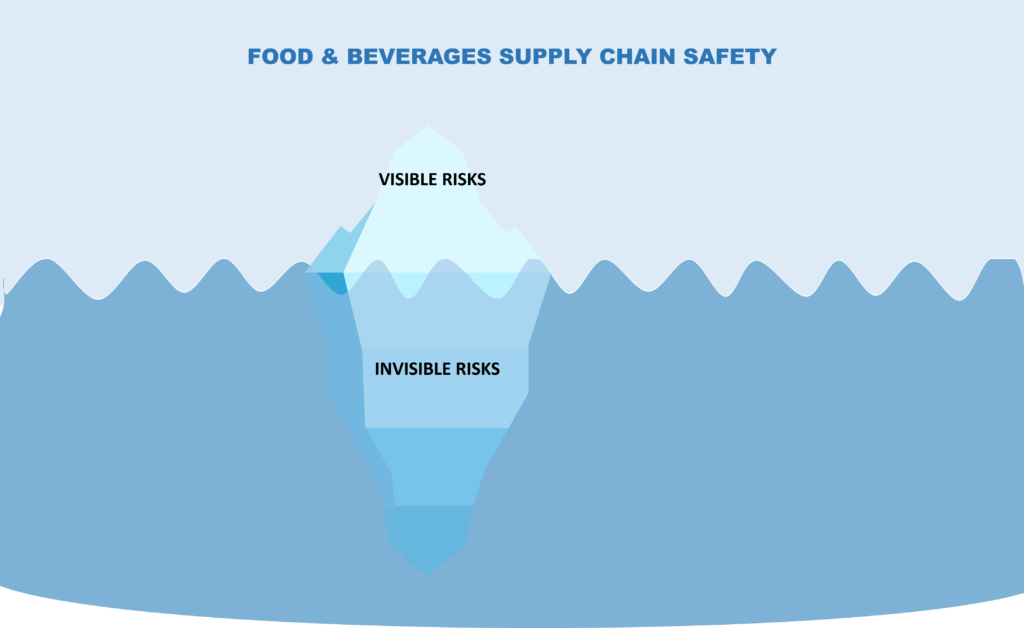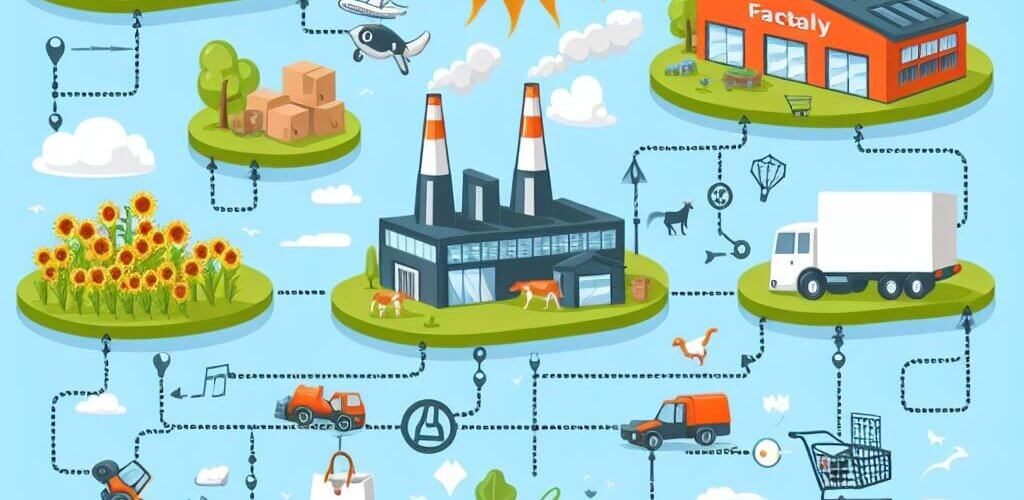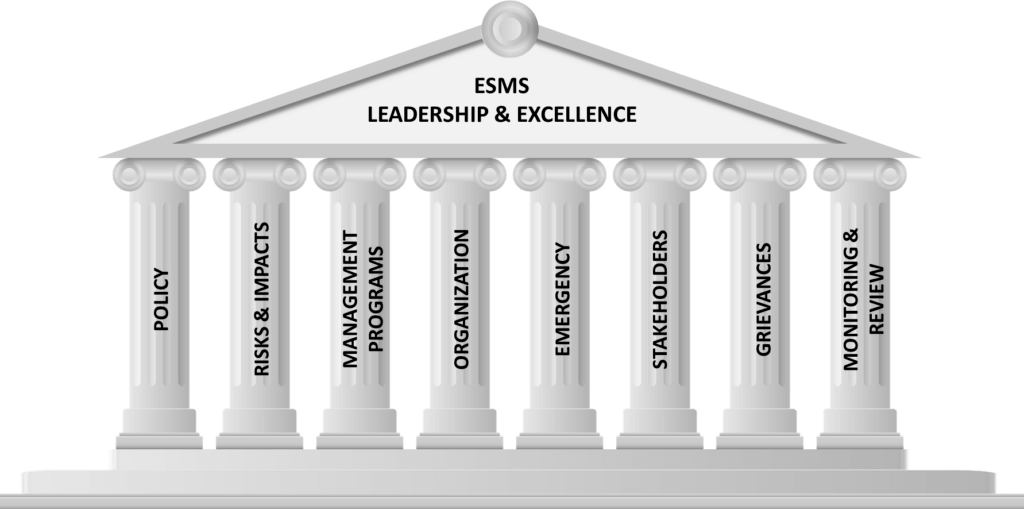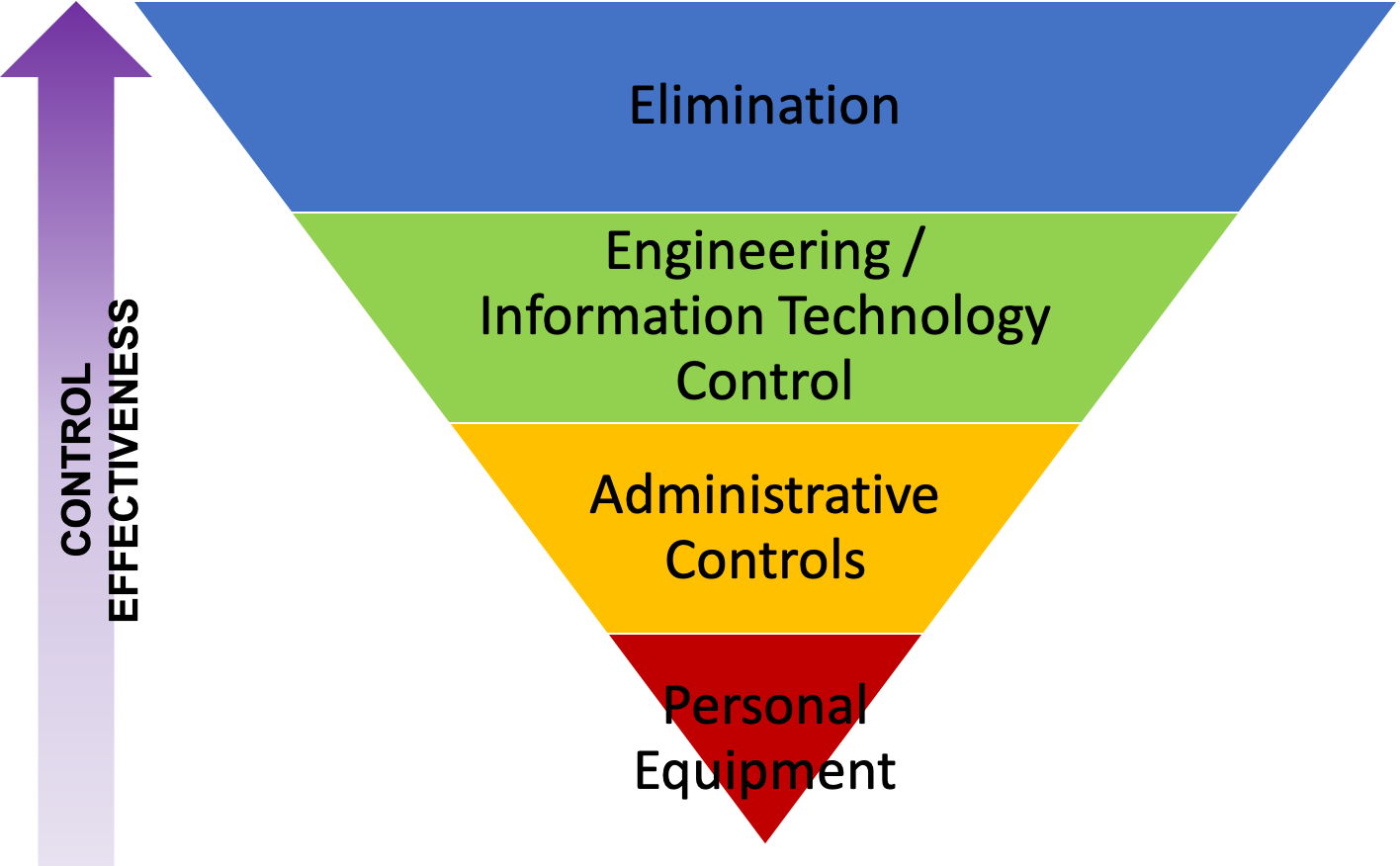Secrets of Food & Beverages Supply Chain Safety
In today’s fast-paced world, where our plates are filled with an array of flavors, the importance of food & beverages safety has never been more crucial. With the global food supply chain becoming increasingly intricate due to increasing variety & number of manufacturers, ensuring what we eat, or drink is safe has become a shared responsibility. From farm to table, the journey of our food & beverages involves various stages, making it essential to prioritize safety measures. Now, more than ever, as we navigate a dynamic and interconnected world, understanding and implementing effective food & beverages safety practices is not just about health; it’s a commitment to fostering a secure and trustworthy culinary experience for everyone.
Reasons for Food & Beverages Safety Concerns
There are several pressing concerns in the current times that highlight the importance of ensuring safety at every step. Some of the key drivers of the increased safety concern are:
1. Complex Supply Chain Networks: The extensive and global nature of modern supply chains introduces complexities, increasing the risk of contamination or mishandling of products as well as spoilage in the supply chain.
2. Diverse Regulatory Standards: Different regions and countries have varying regulatory standards, that are becoming stringent by the day. Navigating this diversity requires meticulous attention to compliance to ensure uniform safety measures.
3. Rising Consumer Expectations: With a growing awareness of health and wellness, consumers now demand higher standards for the safety and quality of the products they consume, adding pressure on the supply chain.
4. Vulnerability to Contamination: From production facilities to transportation, every touchpoint presents an opportunity for contamination, emphasizing the need for stringent preventive measures.
5. Globalization Challenges: The globalization of the supply chain exposes products to diverse environments and climates, increasing the likelihood of unforeseen challenges affecting safety.
6. Technology Integration Risks: While technology brings efficiency, it also introduces risks such as cyber threats and data breaches, compromising the safety of information critical to the supply chain.
7. Supply Chain Disruptions: Natural disasters, geopolitical tensions, or unexpected events can disrupt the supply chain, potentially compromising the safety and quality of food and beverages.
8. Increasing Complexity of Ingredients: As new ingredients and processes are introduced, the complexity of the supply chain grows, necessitating heightened vigilance to ensure the safety of both traditional and innovative products.
9. Need for Transparency: Modern consumers demand transparency regarding the origins and production processes of their food and beverages, requiring supply chain actors to be more open and accountable.
10. Climate Change Impact: Climate-related challenges, such as extreme weather events, can affect the availability and safety of ingredients, posing additional risks to the supply chain.

Strategic Risk Management: Beyond the Obvious
While conventional risk management primarily focuses on identifying and mitigating immediate and tangible risks, strategic risk management takes a broader perspective. It is proactive rather than reactive, encompassing a holistic view of the supply chain and anticipating potential disruptions before they occur. Strategic risk management acknowledges that risks are not isolated incidents but interconnected events that can have cascading effects on the entire chain.
Components of Strategic Risk Management in Food & Beverages Supply Chain are:
1. Risk Identification and Assessment: Strategic risk management begins with a meticulous identification and assessment of risks. This involves not only recognizing immediate threats but also understanding the interdependencies and potential long-term consequences of these risks on the supply chain. This comprehensive approach allows businesses to prioritize and allocate resources effectively. Risks are like icebergs – more risks are hidden than visible.
2. Scenario Planning: Unlike conventional risk management, which often deals with known risks, strategic risk management involves scenario planning for unforeseen events. By envisioning different scenarios and their potential impacts, organizations can develop flexible strategies that can be adapted in real-time, minimizing the effects of unexpected disruptions.
3. Supply Chain Mapping: Strategic risk management involves mapping the entire supply chain to identify vulnerabilities and potential points of failure. This includes not only internal processes but also external factors such as geopolitical events, regulatory changes, and market fluctuations. By understanding the full scope of the supply chain, businesses can make informed decisions to enhance resilience.
4. Suppliers Selection Strategy: Careful vetting and selection of suppliers are crucial steps in mitigating risks associated with ingredient quality, compliance, and ethical sourcing. A well-defined strategy that evaluates suppliers based on stringent safety standards, certifications and compliance management not only safeguards the integrity of the products but also enhances the overall resilience of the supply chain. By prioritizing suppliers with a commitment to safety and transparency, businesses establish a foundation for a secure and reliable food and beverages supply chain.
5. Collaborative Risk Management: Strategic risk management emphasizes collaboration across the supply chain. This involves building strong relationships with suppliers, distributors, logistics service providers and other stakeholders. By fostering open communication and information sharing, organizations can collectively address risks and develop joint strategies to mitigate potential disruptions.
6. Audits and Governance: Rigorous & periodic audits serve as a mechanism for evaluating the effectiveness of risk management processes and ensuring compliance with industry standards and regulations. These assessments go beyond the conventional financial audits, encompassing areas such as supply chain transparency, quality control, compliances and ethical practices. Additionally, a robust governance structure establishes clear lines of responsibility and accountability, providing the framework within which risk management strategies can be executed. By integrating audits and governance into the components of strategic risk management, organizations can not only identify and rectify vulnerabilities but also foster a culture of transparency and ethical conduct throughout the supply chain.
Approach to Food & Beverages Supply Chain Risk Management
1. Risk Culture: Embedding a risk-aware culture within the organization is fundamental to strategic risk management. This involves ensuring that all employees understand the importance of identifying and addressing risks in their daily activities. A proactive and informed workforce is a key asset in mitigating risks effectively.
2. Good Manufacturing & Distribution Practices: GMP sets rigorous standards for the production process, guaranteeing the quality, safety, and consistency of products. Similarly, Distribution Practices focus on maintaining these standards during transportation and storage, ensuring that products reach consumers in optimal condition. By adhering to these best practices, businesses contribute significantly to the overall safety and integrity of the food and beverages supply chain.
3. Traceability & Transparency: Through traceability, businesses can meticulously track the journey of products from production to distribution, swiftly identifying and addressing any potential contamination or quality issues. Transparency fosters trust among consumers, as it allows them to access detailed information about the sourcing, production processes, and ingredients, empowering informed choices and ensuring accountability across the entire supply chain.
4. Continuous Monitoring and Adaptation: Strategic risk management is an ongoing process that requires continuous monitoring of the business environment. By staying attuned to changes in market conditions, technology, and regulations, organizations can adapt their strategies in real-time. This flexibility is crucial for responding to emerging risks and maintaining a competitive edge.
5. Investment in Technology: Leveraging advanced technologies, such as predictive analytics and artificial intelligence, traceability is integral to strategic risk management. These tools can provide valuable insights into potential risks, allowing organizations to make data-driven decisions and enhance their ability to predict and mitigate disruptions.
6. Integration of Sustainability Practices: Embedding sustainability practices within the strategic risk management approach is essential in the food and beverages industry. This includes assessing environmental and social risks, such as climate change impacts, resource scarcity, and labor practices. By incorporating sustainability into risk management, organizations can align their strategies with evolving consumer expectations and regulatory trends, ensuring long-term viability.
7. Crisis Communication Planning: An integral aspect of strategic risk management is the development of crisis communication plans. In the event of a disruption, clear and timely communication with stakeholders is crucial for mitigating reputational damage and maintaining trust. By proactively establishing communication protocols, organizations can respond effectively to crises, providing accurate information and minimizing the impact on brand reputation.
8. Employee Training and Empowerment: Employees are frontline contributors to risk management. Investing in training programs that enhance their risk awareness and response capabilities is a key aspect of the strategic approach. Empowering employees to identify and report potential risks fosters a culture of collective responsibility, where every team member becomes a proactive participant in the risk mitigation process.
9. Regular Review and Updating of Strategies: Strategic risk management is not a one-time endeavor but a continuous cycle of review and adaptation. Regularly revisiting risk management strategies in light of emerging trends, technological advancements, and industry changes ensures that organizations remain agile and responsive to evolving risks. This iterative approach allows for the refinement and optimization of risk management strategies over time.
Conclusion:
In the increasingly complex & uncertain landscape of the food and beverages supply chain, strategic risk management emerges as a vital framework for ensuring resilience and sustainability. By adopting a holistic & strategic approach, organizations can proactively identify and address potential risks, paving the way for a more agile and adaptive supply chain. Beyond the obvious risks lie opportunities for growth and innovation, and strategic risk management is the key to unlocking these possibilities in the dynamic world of food and beverages.










